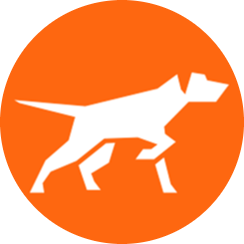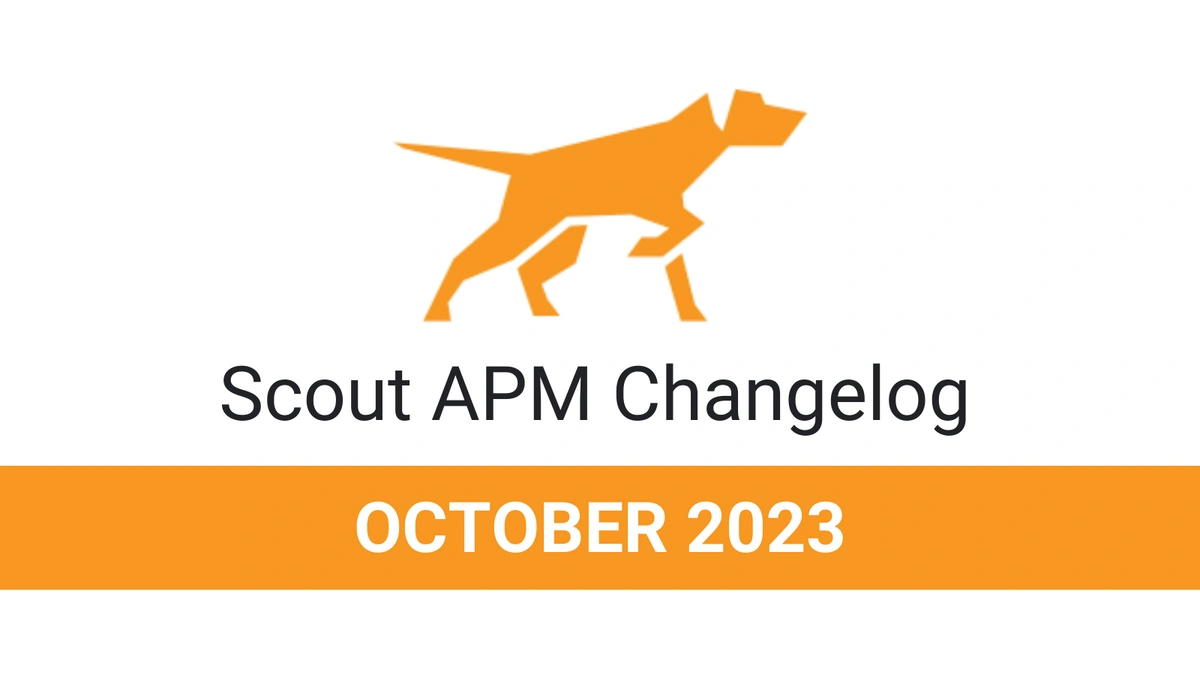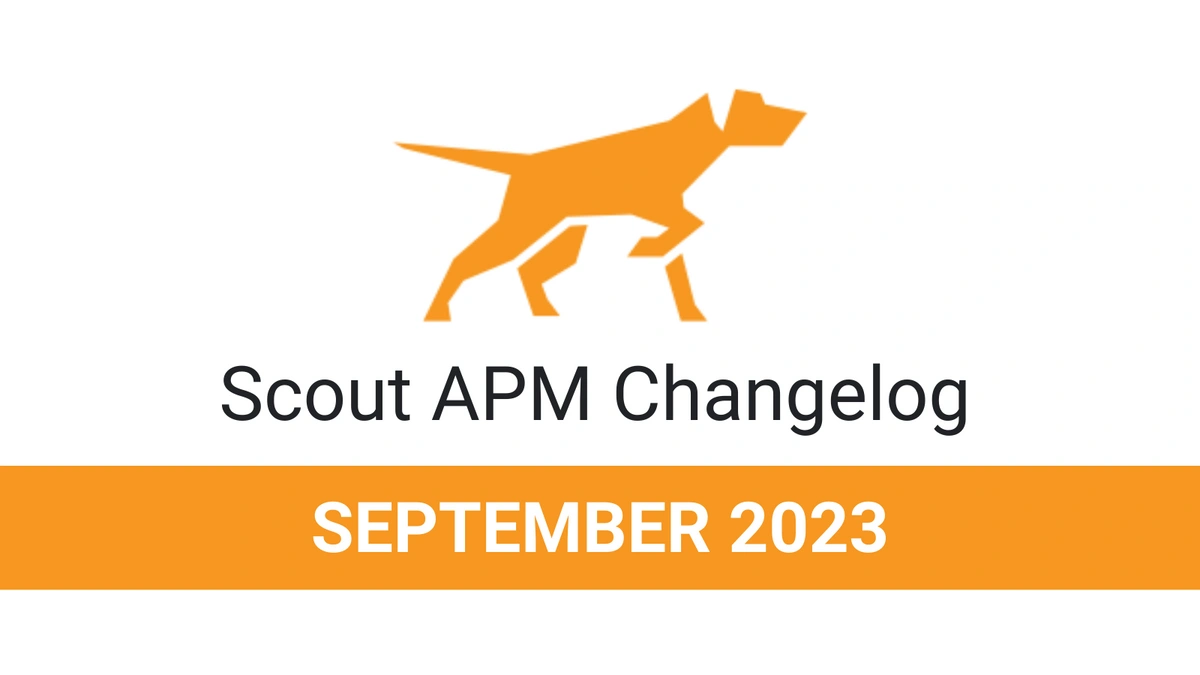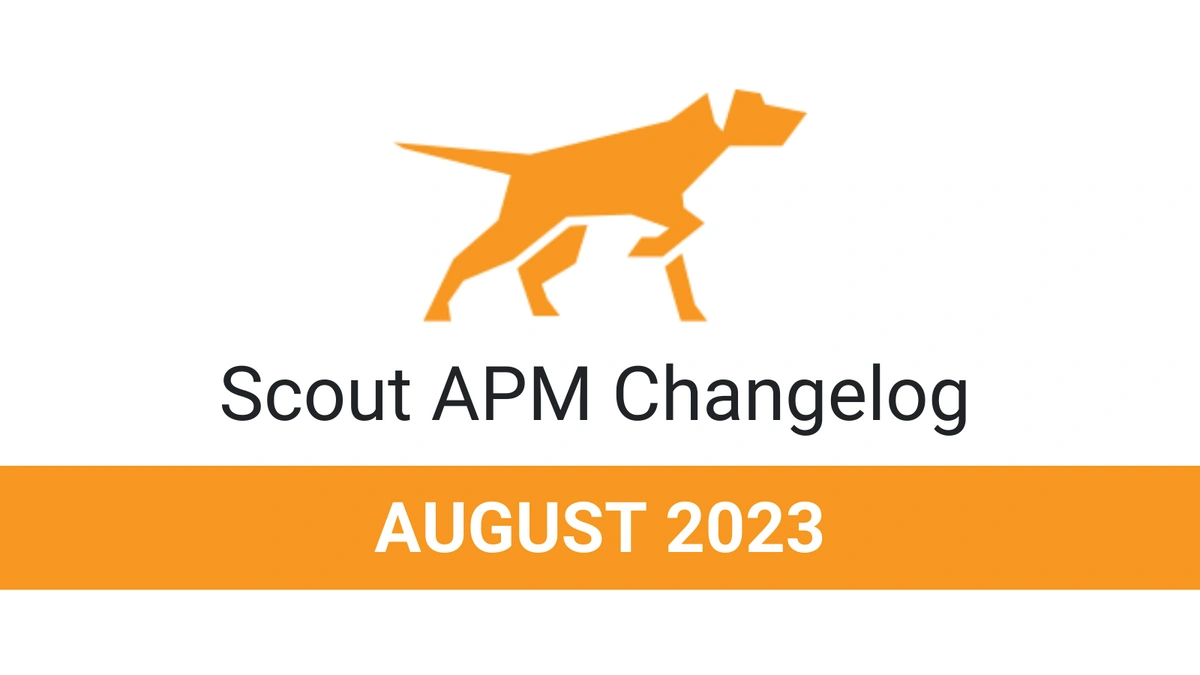AppDynamics vs. Datadog vs. Scout APM
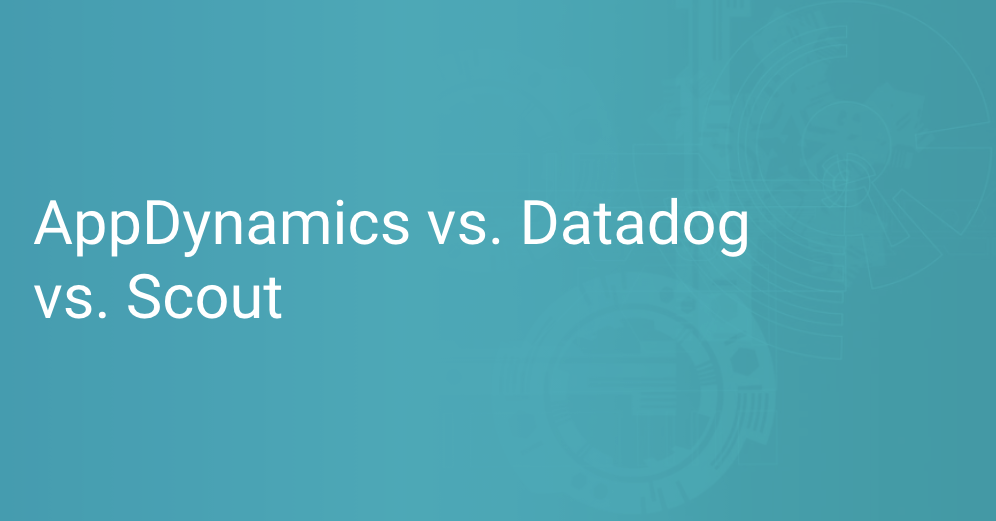
Currently, the world generates an unprecedented amount of data. Research shows that the world generated more data in the last two years than the amount of data produced in the history of the human race.
The most critical part of this entails analyzing the generated data and observing trends. It's at this point where tools like Scout APM, Datadog, and AppDynamics become crucial.
Working with an unprecedented amount of data means tackling millions/thousands of distinct data points. To analyze this information quickly, you need to display it visually to improve your natural spotting abilities. Here, you need to create reports/dashboards that any decision-maker can understand easily.
Creating visualizations needs much of your time, but the demand for data visualization tools keeps increasing from one day to another. A significant percentage of data visualization tools can streamline and automate this data visualization process.
We'll look at Scout APM, Datadog, and AppDynamics in this enlightening guide and learn more about them.
Let's get started!
Comparison Summary
In this part, we'll compare Scout APM, Datadog, and AppDynamics. Use this comparison to spot each software's weaknesses and strengths and decide on the perfect option to select.
|
|
Scout APM |
Datadog |
AppDynamics |
|
Supported platforms |
|
|
|
|
Audience |
Anyone who codes apps in Elixir, Python, PHP, Ruby, and Node.js |
Development teams, security, information technology, and operations |
Information technology enterprises and services industry enterprises |
|
Support |
|
|
|
|
Training |
|
|
|
|
Company information |
|
|
|
Core APM Product Features
APM tools inform information technology managers about problems and help in preventing issues from occurring. These tools make this possible by detecting early cautioning signs that can foretell future issues. They identify issues by monitoring actual user periods or faking them to locate issues/problems before they happen.
The latest APM tools can monitor applications of various forms, such as web applications, mobile applications, or SaaS. The core APM product features include IT asset discovery, collaboration tools, threshold alerts, application monitoring, performance monitoring and server availability, virtualization monitoring, predictive capabilities, database monitoring, and management console.
AppDynamics Features
End-User Experience Monitoring
End-user experience monitoring forms the first APM dimension. Here, EUEM describes the several techniques implemented to monitor the end-user experiences.
End-user monitoring exists in three products under AppDynamics. These include mobile real-time, Browser synthetic, and Browser real-user monitoring. In general, this feature allows you to observe user interactions and user experience and monitor your performance from particular regions.
Browser real-user makes it easy to capture end-user experiences from the browser. This feature allows you to observe user transactions and find performance problems.
Browser synthetic feature monitors app availability 24/7 and gives information relating to its latency from all parts of the world. Also, it fakes browser traffic to evaluate actual end-user experiences.
Mobile real-time feature involves native mobile applications that provide more or less the same measures and options across mobile applications and devices. This feature can triage the user's steps before the application crashed and view errors and latency across services.
Run-time Architectural Discovery/Modelling for Internet Applications
This AppDynamics feature gives you a topology image of how the end user's request traverses several run-time environments. With the topology images, you can quickly understand where the user spends the application latency.
User-Defined Transactions Profiling
AppDynamics makes it easy to capture business transaction anomalies. It does this and bubbles the remaining information for you, making it easy to understand and take the appropriate steps.
Component Deep-Dive Monitoring
Besides capturing stack traces, AppDynamics also collect iOS, Android, C/C++, Node.js, Java, .NET, PHP, and Scala performance metrics.
Analytics
AppDynamics also features the log analytics product, a new feature that indexes and assesses log files. This feature gathers structured/unstructured information, shows application problems, and presents any error in real-time.
Application Performance Management
AppDynamics allows you to create optimal production application performance. Through this, you can meet all your workers' and customers' high expectations.
Infrastructure Visibility
With this feature, you can quickly get visibility into the application's performance improved by the impact of your infrastructure.
Business Performance Monitoring
This AppDynamics feature allows you to get actionable, immediate, and clear correlations between business results, application performance, and end-user experience.
Accelerate DevOps Adoption
With this feature, AppDynamics allows you to experiment confidently. It drives DevOps victory with more informed, real-time decision-making capabilities.
Microservices Monitoring
This AppDynamics feature allows you to continuously create, test, and track your microservices for maximum performance.
DataDog Features
Datadog's primary features include:
- Network
The Datadog network feature makes it easy to visualize cloud-native environment traffic flow and assess performance using easy-to-understand and meaningful tags. This feature allows you to filter traffic flow by using destination and source and report the concerned party about the critical metrics, such as transmission control protocol or traffic volume retransmits.
- Application Performance Management
With the application performance management feature, you can monitor, troubleshoot and optimize application performance. Besides this, the APM feature allows you to track end-to-end pleas across distributed systems. With this feature, you graph latency percentiles and error rates, produce service overviews automatically, and use an open-source tracing library to implement code.
- Log Management
You can quickly find, group, and evaluate logs for data analysis and troubleshooting with the log management feature. This feature enhances automatic collection, tagging, and correlation of platform, application, and service logs. Besides this, the log management feature allows companies to create alerts/visualizations depending on log data.
- Synthetics
Synthetic tests use smart web recorders to assess end-to-end user experiences. This feature makes installing self-maintaining tests as per artificial intelligence control service-level goals/agreements and detecting and developing alerts for performance problems.
- Alerts
With Datadog, you can make custom alerts for all performance problems or metrics. It facilitates notifications through Slack, email messages, PagerDuty, and much more.
- Integrations
Datadog works well with several development stacks and product cluster events/metrics. The software works with standard server components, databases, source control, instrumentation, bug tracking, monitoring, and automation tools.
- Dashboards
With high-resolution dashboards, you can assess and chart real-time events/metrics.
- Collaboration
Most people prefer Datadog because of its top-notch collaboration tools. These tools deliver visibility across different teams by allowing users to annotate adjustments, keep communication and problem records, and discuss various problems in detail with production information.
- Application Programming Interface
With the application programming interface, you can observe applications and infrastructure by applying client libraries to capture metrics/events.
Scout Features
Error Monitoring
Scout’s APM and error monitoring tool plays a critical role in saving time and your hard-earned money. With this tool, you can cut down costs debugging, boost developer productivity and minimize developer fatigue. Scout comes with several dynamic features. These include a search function, real-time errors, full stack traces, real-time alerts through email, monitor error rates, request/custom params, and backtraces Github integrations.
PHP Monitoring
This feature is the reason why Scout manages to reveal problems in the Laravel apps. Scout pinpoints and prioritizes performance/stability problems, including performance abnormalities, slow database queries, N+1 queries, and more.
With its PHP capabilities, Scout manages to automatically report primary PHP monitoring metrics and document Laravel dependencies like Middleware, SQL queries, and controllers. Other features include N+1 questions, viewing codes, digesting emails, monitoring user-specific problems, low overhead, and easy installation through the composer package.
Python Monitoring
This explains why you can see error rate, web transactions, memory usage, response time, throughput, and Apdex score from a single dashboard. Scout is also able to instrument various libraries automatically. Examples of these libraries include Redis, RQ, Bottle, Mongo, Nameko, Falcon, Celery, Pyramid, Dramatiq, SQLAlchemy, Starlette, Django, CherryPy, Jinha, Flask, Urllib3/HTTP, ElasticSearch, and Huey.
Nodejs Monitoring
The Nodejs monitoring tool allows you to see error rate, web transactions, response time, throughput, and Apdex score from a single dashboard. Scout can also instrument various libraries automatically; examples of these include Twig, Middleware, Pug, Controllers, MySQL, and PostgreSQL.
Elixir/Phoenix Application Monitoring
The Elixir/Phoenix application monitoring tool allows you to see error rate, web transactions, memory usage, response time, throughput, and Apdex score from a single dashboard. Phoenix channels, Ecto, MongoDB Ecto, Plug, Exq, Phoenix, HTTPoison, Slime, GenServer, and Absinthe are all examples of libraries that Scout can instrument automatically.
Ruby Monitoring
Scout’s Ruby application allows users to see error rate, web transactions, memory usage, response time, throughput, and Apdex score from a single dashboard. Examples of libraries Scout can instrument include Middleware, Redis, Net::HTTP, ActionView, ActiveRecord, Rack frameworks, Moped, HTTPClient, ElasticSearch, External HTTP calls, and ActionController.
Usability and Dashboards
The best analytic tool must communicate complex data via an easy-to-use interface. Ensure you choose an analytical tool that's not hard to use so that the entire business can easily apply it.
Select a dashboard that's easy to customize so that you can analyze data as required. The best dashboard is the one that you can customize to suit your needs or situation.
Choose a dashboard capable of displaying relevant aspects of your business so that you can make accurate and reliable decisions. If you're a sales professional, you may prefer a customized dashboard visualization capable of displaying critical and relevant metrics.
AppDynamics Dashboards
AppDynamics dashboards allow you to understand your system's health/performance. They represent the selected data in graphical format for quick access. With AppDynamics custom dashboards, you can develop and organize widgets so that users can get a visual overview of the desired data.
A custom AppDynamics dashboard allows you to access a display of specific data/metrics on a single screen. With the AppDynamics dashboards, you can quickly display data metrics, servers, and applications reported by the AppDynamic agents. Moreover, you can supplement the in-built AppDynamics dashboards to show the metrics that a specific audience requires.
AppDynamics allows you to customize dashboards so you can display selected metrics needed by a specific user. This feature enables any custom dashboard viewer to view only the custom dashboards.
Besides this, AppDynamics also offers controller-level custom dashboards. You can use these dashboards to:
- Share data easily with other stakeholders/users
- Show one view of historical data and live data
- Aggregate information from various apps on one controller
- Provide a customized display of database, server, and application performance information
DataDog Dashboards
Datadog gives you access to real-time interactive dashboards. With Datadog dashboards, you can synthesize your information with a button click. These dashboards allow you to combine and match information from networks, applications, containers, services, hosts, and more.
With Datadog dashboards, you can observe business metrics and performance overviews cheek by jowl for 100% visibility. They allow you to explore your network performance, security performance, UX performance, logs performance, and infrastructure performance for 100% observability. Besides this, with Datadog dashboards, you can follow your information to different platform areas without losing context.
You can create new Datadog dashboards in a few seconds. Get started by using the keyboard editing shortcuts, out-of-the-box Datadog dashboards, and mouse-driven widgets. Moreover, you can create new displays without coding anything or using a query language.
Datadog comes with several visualization tools, meaning it's easy to find one that represents your data. In your Datadog dashboards, you'll find alerts highlighting values of critical SLAs, SLOs, and KPIs. You can use top lists, stacked graphs, heatmaps, and more to chart automatically. Remember to configure the dashboard displays to represent your team's requirements correctly.
With Datadog dashboards, you can keep each individual in sync by using the publicly shareable Datadog dashboards and in-built collaboration features. You can also provide your external team with real-time displays by generating public URLs, and by applying internal access controls Datadog allows you to share the dashboards with stakeholders safely.
You can write transformations by using the code editor or analyze metrics by using in-built formulas. Besides detecting real-time anomalies and outliers, Datadog also facilitates composite metrics synthesizing by allowing you to draw on several sources.
With Datadog dashboards, you can compare metrics over custom periods or every month. You can also seamlessly switch between correlation modes, overview modes, and edit modes for each graph.
Scout APM Dashboards
Scout APM allows you to display one to several charts on one dashboard page. Users can arrange and crop the charts via dragging.
Scouts APM dashboards are the perfect option to showcase enlightening plugin information on a single server or several servers. Scout allows you to add one plugin or several plugins and charts on one dashboard.
Scout APM has the right solution for you if you're wondering how you can add a dashboard to an external monitor. It features a full-page mode that ensures you get optimal real estate. Besides this, everything on the Scout APM dashboard refreshes every five minutes.
In general, a Scout APM dashboard forms the entry position to Scout APM's performance insights and your application's performance analytics. The Scout APM dashboard occurs in two forms that include:
Key Performance Indicators
The dashboard's upper section showcases an auto-refreshing picture of critical application health metrics. This dashboard allows you to observe metrics and compare behavior with the previous periods.
Insights
Scout APM analyzes your application's request behavior from time to time and identifies the sections that can cause performance/stability problems. It showcases the analysis result on the dashboard below the critical performance indicators.
Integration Options
Check if the data analysis tool you plan to select can support your file formats and integrate with the business tools you already use in your daily operations. Never choose clashing software tools because this can slow down productivity and cause confusion. Your team can abandon the data analysis tool if they find it challenging to learn.
The data analysis tool can help you when you know how to integrate it seamlessly into the day-to-day operational business systems on the dashboard. At this point, you can quickly assess the reasons behind your business success or failure, identify metrics linked with each failure or success and predict how you achieve your objectives.
The best data analysis tool must feature API support. This support allows you to get interface/tool insights the users use or prefer using.
AppDynamics Integration Options
AppDynamics integration partners include:
- Apica
- PagerDuty
- Micro Focus
- Appvance.ai
- BigPanda
- Moogsoft
- Virtana
- Evolven
- Numerify
- Servicenow
- Neotys
- LaunchDarkly
- Squadcast
- Alam Eless
- GlassBox
- NS1
- CloudFabrix
- Turbonomic
- Bayestree
- xMatters
- Dolphix
- Ayehu
- Quantum Metric
- Harness
- HashiCorp
- Opsgenie
DataDog Integration Options
Datadog integration partners include:
- Linkerd
- APIANT
- Buddy
- Honeybadger
- PagerDuty
- Amazon EC2
- Squadcast
Datadog allows you to use integrations to bring each infrastructure metric and log and deeply understand the entire unified system. With Datadog integrations, you can see each piece and the impacts of each element on one another.
Remember, it's best practice to begin gathering your project metrics while in the development stage. However, you can start the process at any level.
Datadog offers three integrations that include:
- Agent-Based Integrations
You install these integrations with Datadog. With these integrations, you can define the Datadog metrics to gather by using the Python class method.
- Authentication-Based Integrations
For these Datadog integrations, you give credentials for collecting metrics using the API.
- Library Integrations
These integrations apply the Datadog application programming interface to allow you to track apps as per the language used to write them.
Scout APM Integration Options
Scout APM integration partners include:
- AppFollow
- Squadcast
- PagerDuty
Installation
Purchasing Datadog, AppDynamics, or Scout APM is a waste of time and money if you can't use them as per your requirements.
What you’ll get out of Datadog, AppDynamics, or Scout APM depends entirely on your experience in using these tools. For example, Datadog is the perfect option for business users, developers, security engineers, and IT operations teams in the cloud bracket. Therefore, Datadog will be extremely challenging if you don’t fall into these categories.
Using AppDynamics will be an anxiety-free task if you plan to apply it in monitoring insights into business outcomes, user experiences, performance, and objectives. You'll have an easy time using this software to foster collaboration involving Ops and Dev to automate, resolve and isolate the application issue resolution, even under operation.
Choose Scout APM if you're after actionable analytics, rapid troubleshooting, and a unified monitoring approach.
The data visualization tool you choose may have a drag-and-drop interface or require minor coding skills and extensive integrations. So, before choosing any data visualization tool, you should know how you plan to use it and the extent of your knowledge.
Never choose a fancy data visualization tool that you don't know how to operate. However, you can still select that tool if you have the time and money required for extensive training. Consider going for a data visualization tool that's easy to install/use if you don't have this time or money.
AppDynamics Installation Process
Here are the steps you should follow to get started with AppDynamics:
- Create an AppDynamics account (Here, you should choose either enterprise account or self-service trial, and the deployment option)
- Select and then install AppDynamics agents
- Add users to AppDynamics Controller UI
- Enable pre-configured SMTP server notifications by configuring SMS settings or email settings
- Continue with AppDynamics Deployment
DataDog Installation Process
The first step to use Datadog entails installing the Datadog agent. Here, the Datadog agent plays a critical role in gathering metrics on the host.
Creating a Datadog account is the starting point, after which you get the instructions on how to install and run a Datadog agent on various platforms. Here, you'll get detailed instructions for installing/running the agent on Windows, Debian, macOS, Ubuntu, and more. You'll need to download the Datadog agent installer for the Windows case and then run a simple command.
After the installation process, the Datadog agent will automatically start gathering metrics and forwarding them to the Datadog's cloud servers. Within minutes of Datadog installation, you'll begin observing your structure metrics, such as disk utilization, CPU, memory metrics, network traffic, and load metrics populating the dashboard.
It takes a few minutes to install the Datadog agent and observe the metrics as they populate in the dashboard. Consider going through the installation instructions if you plan to install and run the Datadog agent on several servers.
Scout APM Installation Process
The following instructions are how to install Scout APM for a Ruby application. Before installing, you should note that the Scout APM Ruby agent works well with Ruby on Ruby 1.8.7+ and Rails 2.2+. ScoutProf and memory bloat detection need Ruby 2.1+.
Also, note that you can get Scout APM's instructions within their user interface. Here are the steps you should follow to get started with Scout APM:
- Your Gemfile: gem 'scout_apm' and Shell: bundle install
- Download the customized configuration file and add it to config/scout_apm.yml (Get the customized configuration file from your Scout APM account)
- Deploy
Remember, the provisioning process will automatically add the correct settings through config vars if you install Scout APM through the Heroku Addon. You don't need a configuration file in this case.
Choose the Tools that Best Fits Your Business
We hope this article can guide you to make more intelligent and more informed decisions for your business by selecting one of those three data visualization tools. Hesitate no more!
Data visualization will remain a valuable method to accelerate resources. It's a technique that removes your data noise and produces only the reliable values and drawings that can affect your business.
Today's highly competitive globe does not give limits on the number of options to choose for a specific thing. The same case applies when it comes to visualization tools. The highly competitive world offers several analytics tools. The main difference lies in the approach you take to assess your needs and choose a reliable visualization tool based on your requirements.
